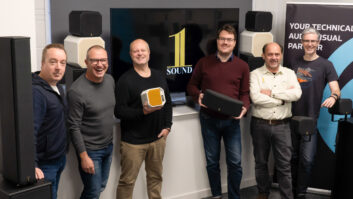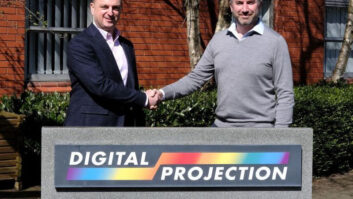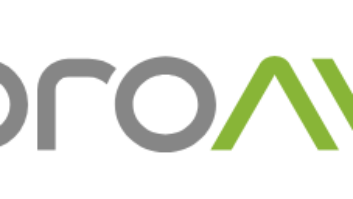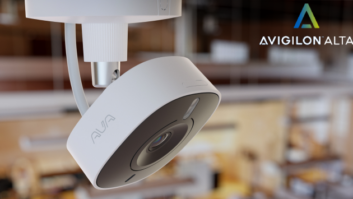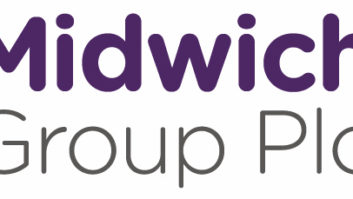The party is over. The good times have ceased to roll. These and other clichés have been aired with depressing regularity recently as seasoned commentators have been wheeled out to proclaim that, yes, the UK and Irish economies are destined for a downturn that will have to be measured not in months, but in years.
Certainly, there is no denying that the latest forecasts make for rather grim reading. While the International Monetary Fund is not alone in suggesting that the UK will probably avoid a full-scale recession during the next two years, few believe that economic growth will rise much above 2% in 2009. The forecast of employers’ group the CBI is particularly dispiriting, with a prediction of 1.3%, suggesting that next year could witness the lowest level of growth in the UK since 1992 – widely regarded as one of post-war Britain’s economic anni horribiles.
Not surprisingly, this outlook is serving to dampen the enthusiasm of the UK business community. Rising costs and a sudden dearth in the availability of credit are just two of the factors contributing to a declining sense of confidence – now at its lowest level since 1996, according to a recent survey of 500 UK firms carried out by the Institute of Directors. More positively, a majority of companies surveyed by the IoD still expect to increase their workforce and investment levels next year.
Moreover, this deteriorating economic situation is being played out against a backdrop of growing political uncertainty. The ‘second honeymoon’ of the New Labour government ushered in by the arrival of Gordon Brown as prime minister in June 2007 proved to be extremely short-lived. Now – embattled by dismal poll ratings and a series of unconvincing relaunches – his political survival is the subject of daily speculation.
Stand-out region
It may not be a source of great comfort for Brown in these days of devolution, but the situation in Northern Ireland is more cheering. A decade of peace and economic stability means that the country is now an attractive destination for international investment and expansion – illustrated neatly by the announcement last month that Bombardier Aerospace is to pour in £500million, in what constitutes the largest single investment in Northern Ireland’s history. With the successful restoration of power-sharing last year, and ambitious plans for economic development receiving the nod from the NI Executive and Assembly, bleak memories of the country’s troubled past are increasingly distant.
By contrast, the Republic of Ireland is having a rather tough time of it. The political climate has been every bit as turbulent as that in Britain during recent months, with Bertie Ahern resigning from the role of Taoiseach (prime minister) after months of speculation about his financial affairs. His successor as PM and leader of the governing Fianna Fáil party, Brian Cowen, now faces the challenge of reviving public confidence in the political system.
He will not be assisted by an economy that, if some sources are to be believed, is heading towards recession for the first time since 1983. A recent report by the Economic Social Research Institute envisages a slight upturn next year, but then only to the tune of a 2% increase in real GDP. The Bank of Ireland, however, believes that the current situation is the result of an “extraordinary slowdown”, with negative GDP growth recorded in the first quarter of 2008 after five years of growth averaging an impressive 5.5% a year. The Celtic Tiger, it seems, is roaring no longer. But if the wider economic framework is facing serious pressures, what impact (if any) is being felt by professional AV suppliers, distributors and installers? Considering the UK market first, the consensus is that while the next year or so is almost certain to witness a drop in activity levels, the underlying business remains in robust shape.
“The economic situation is starting to bite. We have seen several [larger] projects being put on hold, with clients saying that budgets have been frozen until next year, or that they are not sure they can now get the budget to do the projects that they wanted,” says Edward Cook, CEO of Audio Visual Machines (AVM), the UK’s leading integrator in terms of turnover following its recent acquisition of Matrix Display Systems. “Having said that, big installations are only part of our business, so business is generally still good.”
The videoconferencing segment, in particular, shows little sign of trailing off. “Videoconferencing is incredibly popular at the moment and will continue to be so because of the green issues and the economic benefits of using it,” enthuses Cook. “I know it’s a much over-quoted and clichéd phrase, but you can save money with videoconferencing as regards travel expenses. Big corporations are looking at this, and obviously in a downturn they will look at it even more seriously.”
While the corporate market remains the largest single contributor to AVM’s business, the addition of Matrix has also brought education into the picture in a serious way. “Matrix is the current market leader in education in the UK, and has been for quite some time,” observes Cook. “Education is not affected by the situation with the banks, the credit crunch or any of those financial woes.”
Accordingly, AVM now looks forward to playing a decisive role in the continuing roll out of digital signage, videoconferencing and other cutting-edge AV technology in UK schools and colleges. “We are particularly excited by [UK government secondary school renewal programme] Building Schools for the Future,” confirms Cook. “With Matrix’s accreditation within education, and AVM’s large-project and considerable installation and services resources, we think there are great prospects throughout the education sector.”
Audio-Technica is also registering strong business in the public, boardroom and videoconferencing segments – in both the UK and Ireland. Asked how important fixed installation is to the company’s overall business in these countries, Harvey Roberts, senior UK marketing manager, replies that it is “vital”. He adds: “This is a market area that Audio- Technica has been committed to for many years; we were the first manufacturer to introduce a hanging design with the UniPoint range in 1985. We’ve backed this up with the most recent addition of our premier gooseneck and boundary ranges. We will continue to demonstrate our commitment to providing microphone solutions that meet the changing needs of this market segment.”
Roberts – who says that UniPoint series products such as the ES945 and U851R, and ProPoint items Pro 44 and Pro 45, are among the most popular A-T products for installation purposes – reveals that the company is working towards the proposed launch of a new infrared conferencing system, ATCS-60, later this year. “Audio-Technica has provided conferencing solutions in Japan for some years now, but this will represent our entry into Europe for this type of system,” he says. “We previewed the new system during the recent Roadshow events, where it was very well received, and we are planning a customer demonstration event during PLASA.”
Corporate slowdown
Bedford-based projection specialist Paradigm Audio Visual is another company that owes a considerable share of its business to corporate installs. Greg Jeffreys, one of the directors, believes a reluctance by this sector to progress new projects will become increasingly apparent in the second half of the year. “The throughput seems okay now, but what happened during the last recession was not so much that projects were not being booked, it was more that they were being delayed and put back,” he says, drawing a parallel with the UK’s last extended bout of economic malaise in the early 1990s. “Business is still coming in – it’s just harder to get it out the door and invoiced for. The big projects tend to be two or three years in gestation, and I don’t see any upheaval there, but I think that the day-to-day corporate boardroom stuff will be [less plentiful].”
Looking forward, Jeffreys implies that the display technology segment could enjoy a rather brighter future if there was a greater willingness on the part of clients, end-users and installers to embrace more ambitious solutions.
“It’s still a very buoyant market, but the actual methods or systems that people put in tend to be very conservatively engineered, meaning fairly classic IT and content management systems,” he says. “If you contrast that with the newer EU countries, in particular, you find that people are not only doing digital signage, they are doing it in a very creative way. There is a bigger spread of technologies and, in general, people appear to be more courageous in terms of how they approach these sorts of projects outside the UK.”
As indicated in the introduction, the situation in the Republic of Ireland is equally difficult to assess. Paradigm AV is also a player there, meaning that Jeffreys is well placed to chronicle “a tale of two cities. The economy in greater Dublin is holding up okay, but the wider economy – particularly in rural areas – is really suffering.”
Alex Fernie, managing director of Alex Fernie Audio, a Galwaybased audio supplier that derives much of its business from system hire for live events, but is now also pursuing opportunities in install, pinpoints a long-running disparity between the east and west coasts.
“The west of Ireland is quite a small market,” says Fernie. “Even in the summer with all the tourists, Galway probably has a catchment area of only 150,000 people.” Despite this, Fernie is resolutely upbeat about his chosen territory, not least with regards to the regional live venue market. With many venues not able to finance the acquisition of a sizeable, permanent house PA, a long-term hire package is proving to be increasingly popular. “A lot of venues now want to try hosting live music because of the smoking ban – it’s a way of bringing people in,” explains Fernie. “Rather than a venue making a one-off payment for a system, they can actually lease it from us. In effect, it means that the house system is semi-permanently installed – the venues buy the cable, but hire the boxes on a long-term basis. That way, if venues decide that live music isn’t really working for them after three months, they are not left with €30,000 worth of PA that they don’t have a use for.”
The residential sector in this region appears to be developing apace. “The residential business in the west of Ireland is booming. There are a lot of large houses being built in the west, not least because it is such a lovely place,” declares Sean Cleary, regional manager for Crestron in Ireland, the North of England and Scotland.
Meanwhile, there is no shortage of observers who point out that business on Ireland’s eastern seaboard continues to be buoyant, not least with regard to new performance and cultural venues. “Ireland is an important European country with an educated and sophisticated population that expects first-class entertainment and cultural facilities,” says Rob Harris, leader of the performing arts sector for global engineering, design, planning and project management consultancy Arup. “Dublin must provide facilities to match other established and emerging European capitals. Expectations for acoustic excellence are now high.” Accordingly, Arup – which claims to be the leading consulting engineer in Ireland – has a considerable workload on the east coast. “In addition to our major ongoing projects, such as the Grand Canal Square Theatre Dublin and the Wexford Opera House (formerly Theatre Royal Wexford), Arup is hoping to be involved with major new projects for the National Concert Hall in Dublin and the replacement of the Abbey Theatre,” says Harris.
Mark White, regional manager for lighting solutions provider ETC, also testifies to the strength of the Irish theatre and live venues market: “We’ve got quite a few projects coming up, including the redevelopment of the Point [Dublin’s celebrated live music venue] and a number of others along the River Liffey.”
He admits, however, that things are likely to quieten down somewhat during the next 12-18 months. “We have a raft of projects now, but we are seeing few forward orders for projects happening a year or two from now, which is historically the kind of timescale we work on. We do expect things to tail off after these current projects.”
Crestron, meanwhile, draws attention to Ireland’s still-vibrant education market. “University installations are an increasingly important part of our business,” notes Cleary, alluding to a recent project involving the integration of 20-plus Crestron systems at University College Dublin. “It’s a growing market and we need to be in it.”
Extron, too, sounds an optimistic note about the future. “Ireland is a key market for Extron, and our business there remains buoyant,” says Jessica Coombs, Extron’s senior account manager UK/Ireland. “Extron’s breadth and range allows us to find a suitable solution to even the most complex or budget-challenged projects. Beyond our projects, though, Extron’s reputation as a full-service provider is [also] strong. Realising the importance of stability in tough economic times, many integrators in the Irish market return to Extron time and again so they can work with a secure and trusted partner.” Coombs adds that the company’s Twisted Pair and Fiber Optics technologies are proving especially popular at present.
While there are undoubtedly some indications of concern about the future, the responses of our interviewees illustrate the value of looking beyond the demoralising newspaper headlines to examine the on-the-ground reality. Several key sectors, not least education and live entertainment, remain buoyant in the UK and Ireland, with the result that many suppliers, distributors and installers continue to have busy schedules.
The fact that new economic and political variables are entering the frame on a daily basis makes the longer-term future more difficult to predict than ever before, but, for now, there is still plenty of cause for confidence in both of these markets.
